Fifty years after publication shockwaves are still being sent out by Jim Watson’s notorious first-hand account of ‘perhaps the most famous event in biology since Darwin’s book’.
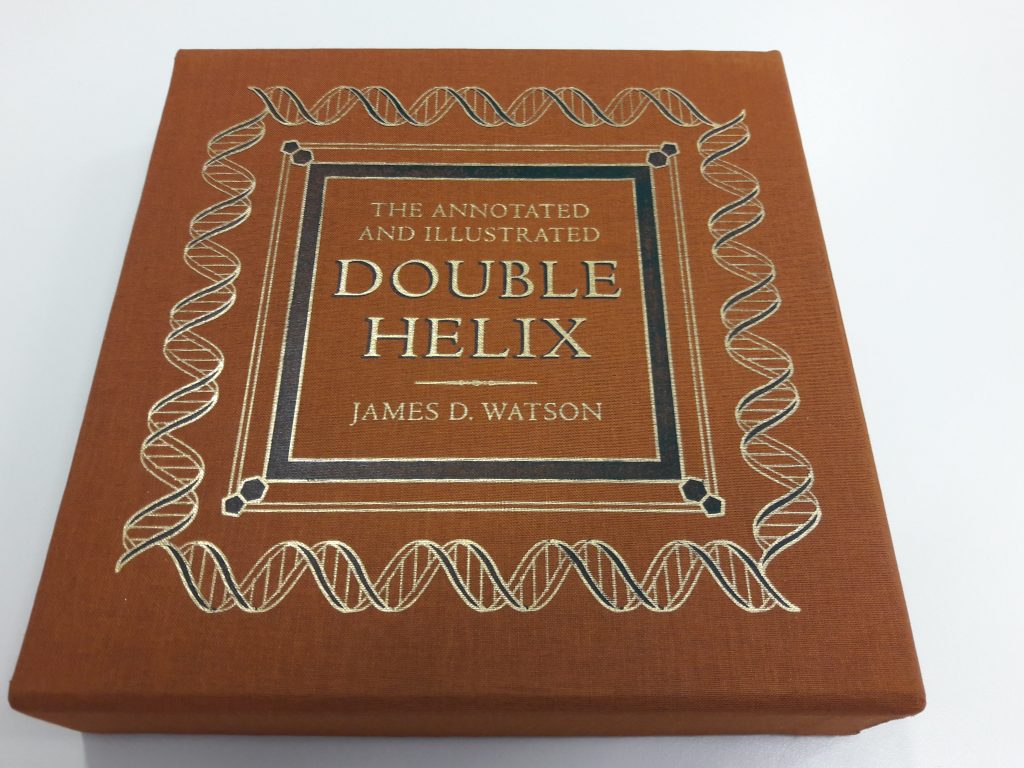
One of the greatest nonfiction books, his memoir provides candid insights into one of the most momentous discoveries of the 20th century, also revealing the scientific quest for the truth as being subjective and messy, a knotty combination of both the collegiate and competitive.

Watson’s braggart book, published in February 1968, underlines how the process of science is challenged by human foibles, an unsettling message that has even more resonance today as research undergoes a replication crisis, with the realisation that the findings of many scientific studies are difficult if not impossible to reproduce.
The title refers to their momentous discovery in 1953 of the structure of the molecule in our cells that forms our genes, a twisting pair of strands of deoxyribonucleic acid (DNA) that has been unravelling to replicate itself since the dawn of life some four billion years ago.
They had ushered in a new era of molecular biology, with an insight that was profound. When they had deduced DNA’s double helix structure, Watson describes how his equally insufferable partner Francis Crick declared in the Eagle pub, where the two lunched in Cambridge, that, ‘we had found the secret of life’ (though at a recent celebration of Crick’s life at Cold Spring Harbor Laboratory, CSHL (where, in tribute, an Eagle pub sign now hangs), Watson admitted that he had made this up for dramatic effect).
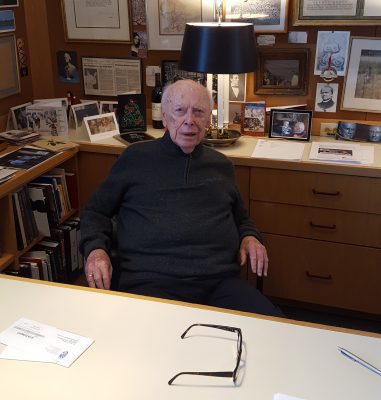
I met Watson a few days ago in New York, along with other authors such as Martin Amis, Helen Fisher, Sidhartha Mukherjee, Amy Harmon, Steve Pinker and Simon Winchester, for a celebration of the 50th anniversary of The Double Helix, and to discuss its impact.
We gathered in the smart six-storey brownstone home of author Andrew Solomon, where the CSHL archivist Mila Pollock showed us the first editions of the book, along with extracts that appeared in The Atlantic. There was an introduction to The Double Helix by the writer Jonathan Weiner and a tribute from Nobel prizewinning neuroscientist Eric Kandel, who praised Watson’s early textbook The Molecular Biology of the Gene as being the ‘best of its kind’ in its day.
Watson told the throng that it was ‘very easy’ and ‘fun’ to write the 30 urgent chapters of The Double Helix, each taking him around a week, and its success was in part down to describing ‘one of the great moments in science.’
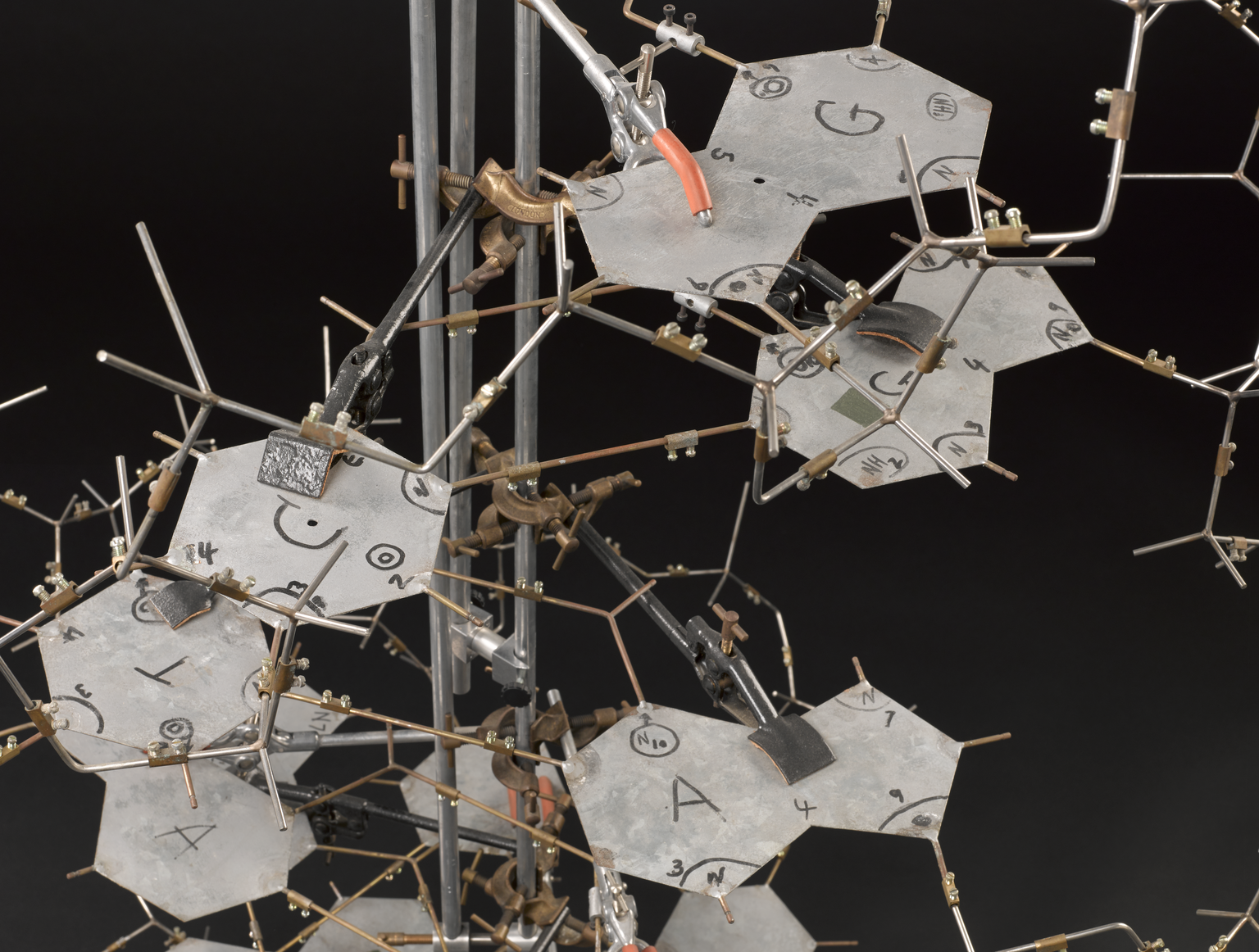
He wrote the book after he shared the Nobel Prize in 1962, with Crick and Maurice Wilkins of King’s College London (older than Watson, both died in 2004). I asked him – had the prize had emboldened him to be candid? ‘No’, was the firm response, though Alex Gann (co-author with Jan Witkowski of The Annotated and Illustrated Double Helix) pointed out that without the prize it was unlikely that the book would have been published.
Watson describes how they raced to beat their great American rival, Linus Pauling. At the outset, he writes: ‘Chiefly it was a matter of five people: Maurice Wilkins, Rosalind Franklin, Linus Pauling, Francis Crick and me’. One of the great strengths of his book is how, as he tells their intertwined story, much science is unobtrusively discussed.
In his foreword to Watson’s nonfiction novel, the Nobelist Sir Lawrence Bragg said he did not know of any other instance ‘where one is able to share so intimately in the researcher’s struggles and doubts and final triumph’.
What added to its novelty was that this account of happenings in the buttoned-up Britain of the 1950s was from the viewpoint of a 24-year-old cocksure Chicagoan who was as obsessed with parties and popsies as he was with science.
Bragg praises Watson’s ‘freshness and directness’, a reference to such gems as ‘a goodly number of scientists are not only narrow-minded and dull, but also just stupid’, or his blunt declarations about Crick (“Already for thirty-five years he had not stopped talking and almost nothing of fundamental value had emerged”) or the revelation that, when it came to Bragg, ‘Crick made his ears buzz.’
Bragg puts it all down to Watson’s ‘Pepys-like frankness’ but, Pepys was candid because he wrote his diaries as a purely personal record, and in shorthand for good measure, while Watson wanted to give the world an insider’s view of the race to reveal the double helix.
Opposition to publication
The publication of Watson’s raffish account was bitterly opposed by both Crick (‘far too much gossip’) and Wilkins, who complained to Watson that it shows ‘Francis as a feather brained hyperthyroid, me an overgentlemanly mug, and you an immature exhibitionist’…. Nor do I want to stand on one side while Rosalind is discredited’. Wilkins was bewildered by Watson’s depiction of his colleague Franklin as a ‘mean and priggish bluestocking.’ (Though perhaps he should not have been surprised – Watson gleefully told me that ‘I sort of traumatised Wilkins by my enthusiasm.’)
Harvard University Press dropped the book, which was picked up by a newly-established commercial publisher called Atheneum. Concerns about libel only calmed when Bragg agreed to do the foreword, giving it credence. Even though Crick had complained ‘Who could possibly want to read stuff like this?’, the book was an immediate bestseller, shifting more than a million copies.
Crick would come to accept that Watson had written something special, which showed the complex way theories become ‘fact’, even if it did begin with: ‘I have never seen Francis Crick in a modest mood.’ (Watson told the 50th celebration that he had even toyed with calling his book Base Pairs ‘as a joke to annoy Francis’).
In retaliation, Crick quipped that he had thought of writing his own account, provisionally entitled ‘The Loose Screw’ and starting out with: ‘Jim was always clumsy with his hands. One had only to see him peel an orange.’
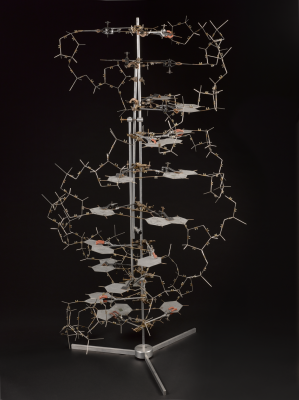
When I talked to Wilkins in 2003, he acknowledged that The Double Helix was pioneering for the vivid insight it gave into the personalities and process of science. He bore no malice towards Watson and Crick, whom he had called ‘a couple of old rogues’. But he did have one regret.
Wilkins had declined when they had had invited him to co-author the Nature letter that unveiled the double helix in April 1953. He reasoned that he had not helped them build their now famous model of DNA (you can see a copy in the Science Museum, which contains pieces of the original) but he subsequently realised that co-authorship would have emphasised the crucial cooperation between Crick and Watson in Cambridge with the team at King’s.
The controversy lives on
Today The Double Helix remains controversial for Watson’s musings on the opposite sex (‘The thought could not be avoided that the best home for a feminist was in another person’s lab’…. ‘the presence of popsies does not inevitably lead to a scientific future.’) and for his portrayal of ‘Rosy’, the King’s College chemist whose work, unknown to her, was revealed to Watson and Crick by Wilkins: (note that the nickname ‘Rosy’ was not dreamt up by Watson but by her colleagues at King’s).
Watson’s book provides a vivid glimpse of the antediluvian attitudes of the day: ‘She was not unattractive and might have been quite stunning had she taken even a mild interest in clothes. This she did not’ writes Watson in one passage. And in another: ‘I wondered how she would look if she took off her glasses and did something novel with her hair.’
Watson and Crick were swept along in their efforts to crack biology’s deepest mystery by a creative convergence of their work in Cambridge with that in London, and of research in two fields of science: chemistry, notably by playing with toy-like models of the shape of molecules, and physics, which furnished a way to reveal the structure of complex molecules with X rays, a technique that Bragg had pioneered four decades earlier.
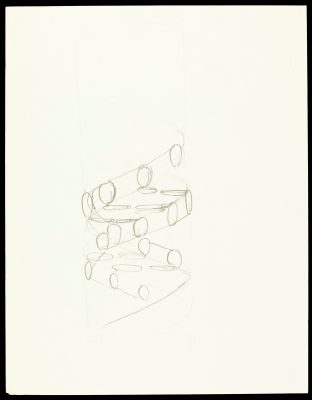
There were many ingredients of success: the three laureates had been inspired by What Is Life? The Physical Aspect of the Living Cell, a 1944 book by physicist Erwin Schrödinger. Watson and Crick were spurred on by their rivalry with Pauling. The molecular structures for their models were corrected one Thursday by quantum chemist Jerry Donohue, who shared an office with them. (That insight provided the ‘key,’ Watson told me, for building one turn of the double helix the following Saturday on a table in the middle of their office.) And they had access to the X-ray data from King’s.
There Wilkins had been on to the idea of helices since 1951 but his boss John Randall had soured Wilkins’s relationship with Franklin (Randall had implied in a letter to her that DNA would be her project alone), and she was both uninterested in building models and dismissive of the idea of a helix. As Watson recalled, ‘She became increasingly annoyed with my recurring references to helical structures.’
Her data, which she did not directly share, would prove vital, as he put it (Watson recalled her photograph 51 was a revelation, because it “was so perfect”), and she provided insights into the relationship between the bases (the chemical ‘letters’ of the code) and the supporting structure of phosphate groups. Initially, late in 1951, they got the structure inside out (‘pure crap’, as Watson trenchantly put it to me) and ‘Rosy had hit it right in wanting the bases in the centre and the backbone outside’. Even so, persiflage proved irresistible to Watson: ‘her past uncompromising statements on this matter thus reflected first rate science, not the outpourings of a misguided feminist’.

But the relatively recent vogue for crediting Franklin with the most important part of the discovery has gone too far, Crick remarked the year before he died. Franklin, who was close to Crick, especially during her last illness, had never complained that she deserved more credit. But, of course, she never realised the extent to which the Cambridge duo had relied on her data.
Despite his attitude towards Franklin, Watson does not portray her as a passive victim: Franklin ‘got positively aggressive’ … ‘displayed increasing irritation’…. and ’fierce annoyance’ Indeed, Wilkins found that she could be terrifying. But when they eventually cracked the structure in 1953, Watson reports how she ‘accepted the fact that the structure was too pretty not to be true’. By the start of that year she too had come around to the idea of helices, after being, at best, unconvinced, at worst, hostile to the idea.
Franklin died of cancer in 1958 but if she had been alive when the Nobel committee had deliberated about the prize, which can only go to a maximum of three people, Watson said ‘it would have produced an ‘awkward if not insolvable dilemma.’
The implications of the double helix were profound. Watson was nervous about discussing them and it was Crick who came up with the payoff of their letter to the journal Nature: ’It has not escaped our notice that the specific pairing we have postulated immediately suggests a possible copying mechanism for the genetic material.’ By splitting the base pairs of the double helix apart, and using each DNA strand as a template for building a new strand, DNA could replicate itself, along with its genes.
Thus, by revealing the structure they had shown how biological information is transmitted down the generations. Watson recounted his initial reaction when he saw the double helix that fateful Saturday: ‘I’m going to be famous.’ He felt a Nobel prize would inevitably follow, though it would take a year for another reference to the double helix to appear in Nature and nine years in all for the prize to eventually materialise.
Beyond the Double Helix
Watson did not rest on his laurels. He decided to leave Cambridge, despite its huge influence on biology at that time. “Francis being such a dominant person, I had to. My own career demanded I separate from Francis. ‘
Watson moved to Harvard University where his laboratory made many early contributions to molecular biology including, along with a group led by Sydney Brenner, the discovery of messenger RNA that mediates the transfer of genetic information from DNA to the cell.
Watson would become an intellectual impresario, turning Cold Spring Harbor Laboratory on the East Coast of America into one of the world’s principal centres of biology, focusing on cancer genetics, where around 1150 people now work. He led the effort to read the entire human genetic code, which he began to consider in 1966, and on the way, he has courted much controversy, for instance making provocative comments on intelligence (always a fraught issue), declaring that the research on mice of Judah Folkman at Harvard Medical School would cure cancer within two years, or advocating genetic enhancement: ‘All parents want the best for their kids’.
The double helix has stood the test of time. That is not the case for a surprising amount of research. In 2005, John Ioannidis, Professor at Stanford University, stunned his peers with a study bluntly entitled Why Most Published Research Findings Are False. A decade later, it was reported that more than half of psychology studies could not be reproduced and, last year, Ioannidis concluded that cognitive neuroscience was in an even worse state than psychology. Efforts to reproduce the findings of many papers have proved problematic.
That is why, half a century on, The Double Helix remains required reading. If it has revealed anything about the process of research, it is that the motor that drives many scientists on is much more than simply a cold-eyed, logical quest to sate their curiosity with the truth. Science is also propelled by a hot-blooded urge to do absolutely anything to be first.
Sources
James D Watson, The Double Helix (Weidenfeld & Nicolson , 1997)
James D Watson, Editors Alexander Gann and Jan Witkowski, The Annotated and Illustrated Double Helix, (Simon & Schuster, 2012)
James D Watson, in conversation with Roger Highfield, Cold Spring Harbor, 10th January 2018
Francis Crick, What Mad Pursuit (Weidenfeld & Nicolson, 1988)
Maurice Wilkins, The Third Man of the Double Helix (Oxford University Press 2003)
Roger Highfield and Matt Ridley, DNA pioneers: the rivalry, the discovery, the future, The Daily Telegraph, 28 February, 2003